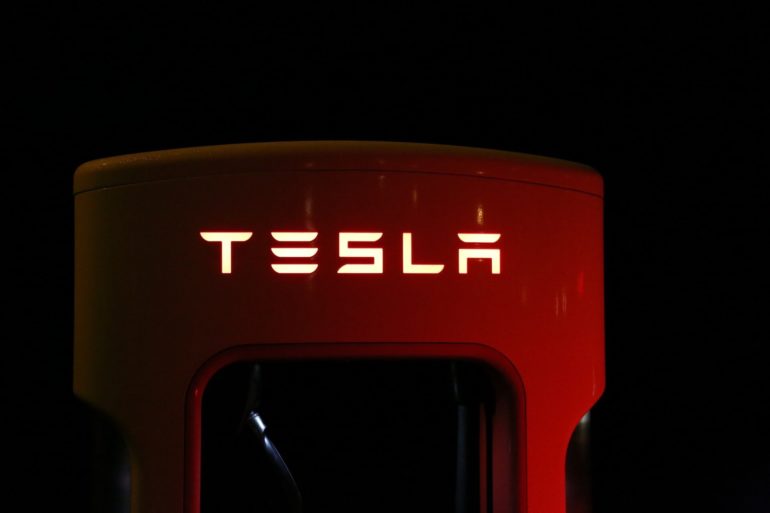In the United States only about 1.3 percent of all vehicles sold last year were battery powered. And about 90 percent of those sales were by one company—Tesla. What has Tesla done right and where have other electric vehicle makers gone wrong?
Electric vehicles cannot succeed without developing a nationwide network of fast-charging networks in parallel with the cars. Current EV business models are doomed unless manufacturers that have bet their futures on them, like General Motors and VW, invest in or coordinate on a robust supercharger network. These are the observations in an in-depth study of the industry by management professors at the University of California, Davis, and Dartmouth College.
The researchers explain that big and traditional automakers have made exciting EVs but have essentially ignored the charging station side of the equation. Meanwhile, Tesla worked both sides of the market by building a sufficiently wide network of high-speed charging stations before they sold too many cars. There are about 4,000 high-voltage super-fast charging stations in the U.S., and the majority of them are available only to Tesla vehicles.
“Tesla has played the platform game. Other automakers are still playing a product game,” said Hemant Bhargava, a professor of technology management at the UC Davis Graduate School of Management. “This advantage that Tesla has is not permanent. Other automakers are collectively investing $200 billion in their new electric models. If they put only a few billion dollars, in a coordinated way, into rolling out a supercharging network, they could have enough stations to be competitive.”
Bhargava and his co-authors compare the EV industry to various other platform-based products, such as smartphones, which are not nearly so useful without a mobile data network that delivers high-speed connectivity outside the home.
The article, “The Business of Electric Vehicles: A Platform Perspective,” was published recently in Foundations and Trends in Technology, Information and Operations Management. The authors are Hemant K. Bhargava, UC Davis Graduate School of Management; Jonas Boehm and Geoffrey G. Parker, Dartmouth College. Bhargava directs the UC Davis Center for Analytics and Technology in Society, which focuses on platform business.
The researchers contend that elected officials and public policymakers have called for a rapid shift toward EVs from traditional gasoline-powered transportation and have set ambitious goals. Increasingly, these policies and goals are backed by research and evolving public sentiment, with buyers willing to pay premium prices for EVs. But, the authors submit, “where do they charge up?” The lack of charging infrastructure has throttled adoption of EVs. About 17 million automobiles were sold in the United States in 2019, of which only about 245,000 were battery-powered electric vehicles, researchers said.
General Motors, the researchers said, spent $1 billion developing its first electric car, and another $1.2 billion developing the Chevy Volt, and Nissan has spent $5.6 billion developing its electric passenger cars. With the major automakers promising new EV models, Bloomberg New Energy Finance predicts that 500 different EV models will be available globally by 2022. The lack of a robust charging network for them will be even more of a glaring omission, Bhargava said.
“There’s a chicken-and-egg problem here,” Bhargava explained. “Charging station providers will not invest huge amount of money in stations until there are enough cars on the road. But you won’t have mass sales of cars until there are enough stations.”
Meanwhile, Tesla split its investments on both sides of the market and developed the charging infrastructure in parallel—a necessary element of their success, the researchers said.
“The huge charging station network is one of Tesla’s great competitive advantages,” said Bhargava.
Despite likely being defensible in the short run, it is very unlikely that proprietary charging networks are defensible in the long run and the likely low profits make this complement rather unattractive to defend, the researchers concluded.
“I would expect that in about 10 years, as the total EVs on the road grow substantially, there will be a force for universal or industry-wide charging stations, like we have today for refueling stations,” Bhargava said.
Volkswagen triples electric car sales ahead of climate rules
More information:
Jonas Boehm et al. The Business of Electric Vehicles: A Platform Perspective, Foundations and Trends in Technology, Information and Operations Management (2020). DOI: 10.1561/0200000097
Citation:
Tesla’s advantage: EVs cannot succeed without developing parallel supercharging networks (2021, February 2)
retrieved 3 February 2021
from https://techxplore.com/news/2021-02-tesla-advantage-evs-parallel-supercharging.html
This document is subject to copyright. Apart from any fair dealing for the purpose of private study or research, no
part may be reproduced without the written permission. The content is provided for information purposes only.



